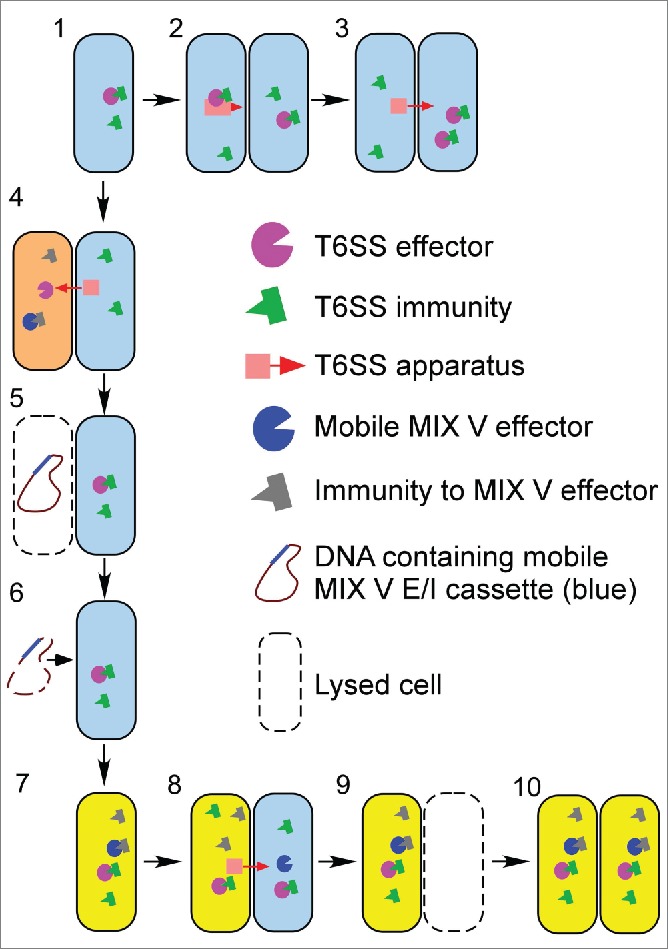Figure 1.

Mobile MIX V-effectors can drive population dynamics and evolution. 1) A parental bacterial cell (blue) harbors a T6SS and antibacterial E/I pairs. 2) When encountering a kin cell, it can activate its T6SS and deliver antibacterial effectors. 3) The recipient kin cell survives the attack as it encodes and expresses the immunity proteins against its own (and its kin's) effectors. 4) A foreign bacterium (orange) that encodes a mobile MIX V E/I pair comes in contact with the parental cell, which attacks it using its T6SS. Antibacterial effectors are delivered into the "foreign intruder" cell. 5) The "foreign intruder" cell dies and lyses as a result of the antibacterial activities of the delivered T6SS effectors, as it does not encode the cognate immunity proteins. 6) The lysed cell releases its DNA containing a mobile MIX V E/I cassette, which can be taken up by the attacker. 7) The mobile MIX V E/I cassette from the DNA of the lysed cell is incorporated into the attacker's genome, and this “evolved” cell (yellow) now expresses the new MIX V E/I pair. 8) The “evolved” cell attacks its neighboring parental kin using the T6SS and delivers the newly acquired antibacterial MIX V effector into the recipient parental kin. 9) The recipient parental kin cell dies as a result of this attack as it does not encode an immunity protein against the new MIX V effector delivered by its “evolved” neighbor. 10) The “evolved” cell containing the new MIX V E/I cassette, which now has competitive advantage over its parental kin, propagates and takes over the bacterial population.
